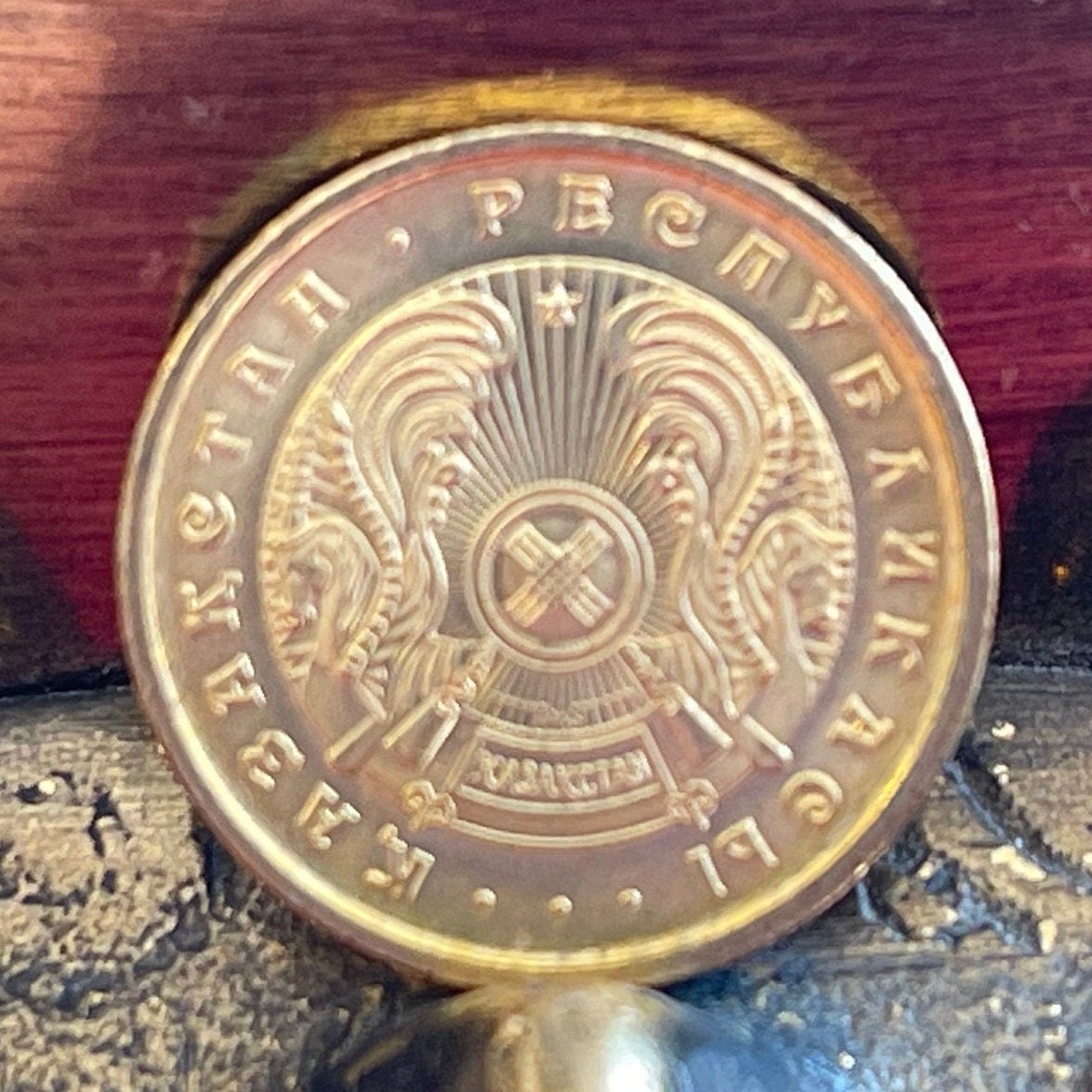elemintalshop
Tulpar Winged Horses 5 Tyin Kazakhstan Authentic Coin Money for Jewelry and Craft Making
Tulpar Winged Horses 5 Tyin Kazakhstan Authentic Coin Money for Jewelry and Craft Making
Couldn't load pickup availability
Tulpar Winged Horses 5 Tyin Kazakhstan Authentic Coin Charm for Jewelry and Craft Making
Obverse
National emblem - with winged Tulpar horses - surrounded by the country name
Lettering: ҚАЗАҚСТАН · РЕСПУБЛИКАСЫ ···
Translation: Republic of Kazakhstan
Reverse
Star design divides date with value within
Features
Issuer Kazakhstan
Period Republic (1991-date)
Type Standard circulation coin
Year 1993
Value 5 Tyin (0.05 KZT)
Currency Tenge (1993-date)
Composition Brass plated zinc
Weight 1.9 g
Diameter 17.2 mm
Thickness 1.35 mm
Shape Round
Technique Milled
Orientation Medal alignment ↑↑
Demonetized 31 December 2012
Number N# 1538
References KM# 2
Wikipedia:
Tulpar (Kazakh: Тұлпар, Bashkir: Толпар, Tatar: Тулпар, Kyrgyz: Тулпар, Turkish: Tulpar, Uighur: تۇلپار) is a winged or swift horse in Turkic mythology (for example, Kazakh and Tatar mythology), similar to Pegasus. Tulpar is also in state emblems of Kazakhstan, Mongolia and Bashkortostan.
The coat of arms of Kazakhstan
Tulpar came to be due[clarification needed] to the hunting lifestyle of the people of Central Asia. The people hunted with horses, with the company of a bird of prey. These two animals, with the human imagination, formed into one creating the winged horse known as Tulpar.
This mythical creature has also been used as state symbols of Kazakhstan, the emblem of which is decorated with two golden Tulpars, the top of a yurt (the yurt is a traditional tent where the Kazakhs lived) and the sun rays. The blue background represents the sky where the Tulpars run.
Tulpar is the legendary horse that appears in culture of Turkic-speaking nations (Turks, Uzbeks, Kazakhs, Kyrgyz, etc.). The association of a bird with a horse can also be changed to that of a sight hound. A picture of a sight hound coming together with a picture of a legendary horse allowed for the word Tulpar to form, which is the kennel name.
The wings were not necessarily for flight but to emphasize their speed. These horses shared their lives with their masters.
Share















